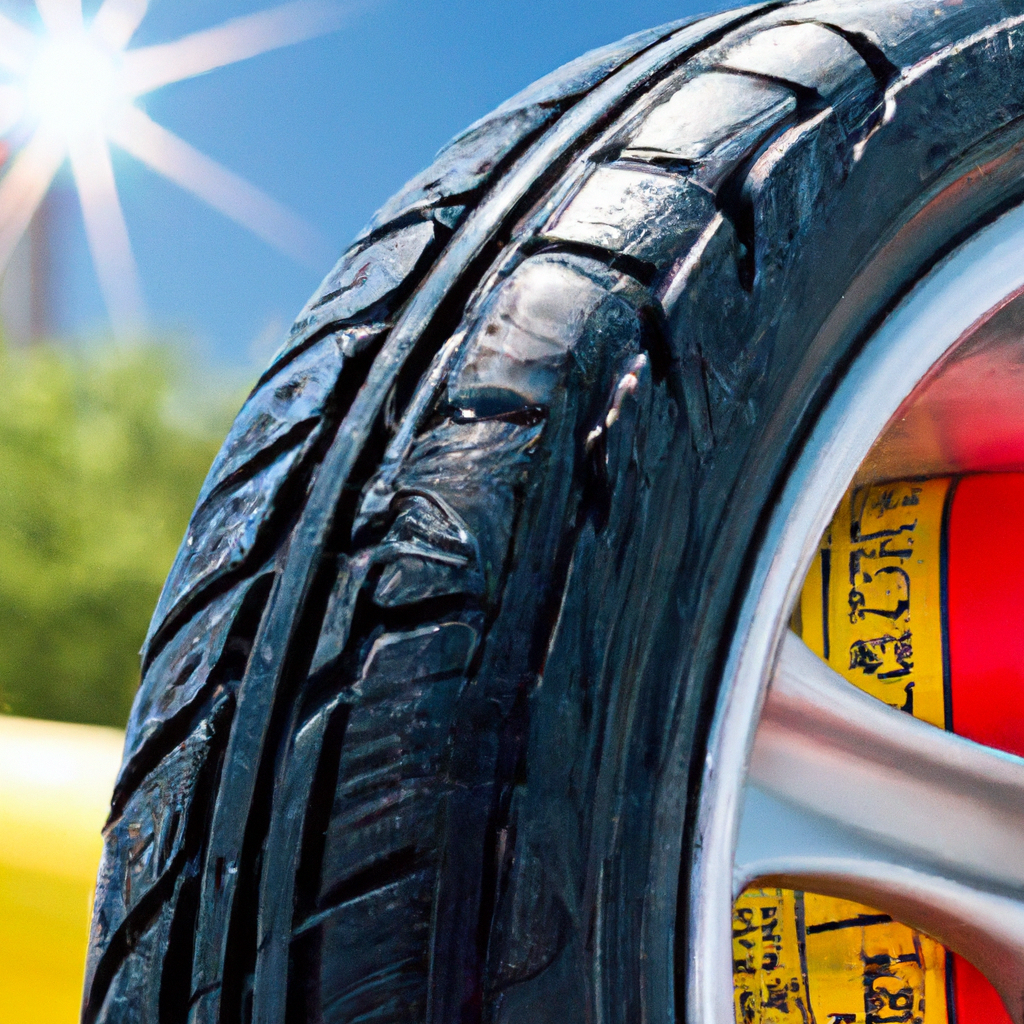Have you ever wondered if it’s possible to use summer tires in areas with sporadic rain and intense heat? Well, the answer might surprise you! While summer tires are designed specifically for warm climates and provide excellent traction on dry roads, they may not be the best choice for areas that experience infrequent rain showers and scorching temperatures. In this article, we will explore the pros and cons of using summer tires in such regions, and help you make an informed decision about the most suitable type of tires for your location.

The Purpose of Summer Tires
Traction in warm weather
Summer tires are specifically designed to provide optimal traction and performance in warm weather conditions. The rubber compound used in summer tires is designed to remain flexible and grippy even in high temperatures, allowing for better control and stability on the road.
Optimal performance on dry roads
One of the key advantages of summer tires is their performance on dry roads. The tread design of summer tires is designed to provide maximum contact with the road surface, allowing for improved acceleration, braking, and cornering. This makes summer tires an excellent choice for areas with predominantly dry weather conditions.
Understanding Summer Tire Composition
Rubber compound
Summer tires are made from a special rubber compound that is optimized for warm weather. This compound contains a higher proportion of natural rubber, which provides better grip and flexibility in high temperatures. The unique chemical composition of the compound ensures that the tires retain their performance characteristics even in extreme heat.
Tread design
The tread design of summer tires is another crucial factor in their performance. Summer tires typically have a lower tread depth and a more rigid pattern compared to all-season or winter tires. This design allows for better responsiveness and stability on dry roads, providing optimal grip and control during acceleration, braking, and cornering maneuvers.
The Impact of Rain on Summer Tires
Reduced traction
While summer tires excel in dry conditions, their performance can be significantly compromised in rainy weather. The shallower tread depth and less aggressive tread pattern of summer tires are not designed to effectively channel away water, resulting in reduced traction on wet surfaces. This can lead to longer braking distances and less control over the vehicle.
Increased risk of hydroplaning
With their limited ability to disperse water, summer tires are more prone to hydroplaning in rainy conditions. Hydroplaning occurs when a layer of water builds up between the tires and the road, leading to a loss of control and traction. The risk of hydroplaning is especially high at higher speeds, making it important to consider alternative tire options in areas with sporadic rain.
The Effect of Heat on Summer Tires
Increased wear and degradation
Extended exposure to high temperatures can cause summer tires to wear out more quickly. The heat can accelerate the breakdown of the rubber compound, reducing its grip and overall performance. It is important to monitor tire wear regularly and replace them when the tread depth becomes too shallow to ensure optimal safety and performance.
Reduced performance
In excessively hot weather, summer tires may experience reduced performance due to the heat affecting the tire’s structure and compound. The increased friction and heat can cause the tire to become softer and less responsive, leading to decreased traction and handling capabilities. This can be particularly concerning in areas with sporadic heat, as sudden temperature spikes can catch summer tires off guard.

Sporadic Rain and Summer Tires
Compromised traction
In areas with sporadic rain, summer tires can still provide acceptable performance on wet surfaces as long as the rain is not too heavy or sustained. However, it is important to remember that summer tires are not designed for optimal performance in wet conditions, and their traction will still be compromised compared to all-season or winter tires. It is crucial to drive with caution and adjust your driving style accordingly.
Adverse effects on handling
Sporadic rain can also have adverse effects on the handling of vehicles equipped with summer tires. The reduced traction on wet surfaces can affect the ability to perform sudden maneuvers, such as emergency braking or swerving. It is important to anticipate these limitations and drive defensively to ensure safe and controlled handling.
Sporadic Heat and Summer Tires
Increased risk of blowouts
In areas with sporadic heat, the occasional rise in temperature can pose risks to summer tires. The combination of high ambient temperatures and prolonged driving can cause the air inside the tires to expand, leading to increased pressure. This increased pressure can potentially result in blowouts if not monitored and managed. Regularly checking tire pressure and adjusting it to the manufacturer’s recommended levels is essential to minimize the risk of blowouts.
Decreased performance on hot surfaces
Summer tires may also exhibit decreased performance on extremely hot surfaces. When the temperature of the road exceeds the optimal operating range of the tires, the rubber compound can become excessively soft, reducing grip and handling capabilities. This can be particularly concerning in areas with sporadic heat, as unexpected heatwaves can lead to unexpected challenges for summer tires.

Alternative Tire Options for Areas with Sporadic Rain and Heat
All-season tires
For areas with sporadic rain and heat, an alternative tire option to consider is all-season tires. All-season tires are designed to provide versatile performance in both wet and dry conditions. While they may not offer the same level of performance as summer tires in dry weather, all-season tires excel in providing adequate traction and handling in various weather conditions, making them a suitable choice for regions with sporadic rain and heat.
High-performance all-season tires
For those seeking a balance between performance and all-season capabilities, high-performance all-season tires are a great option. These tires offer improved handling and grip on dry surfaces compared to regular all-season tires, while still maintaining good traction in wet conditions. High-performance all-season tires can provide a suitable compromise between the specialized performance of summer tires and the versatility of all-season tires for areas with occasional rain and heat.
Considerations for Using Summer Tires in Areas with Sporadic Rain and Heat
Monitoring weather forecasts
When using summer tires in areas with sporadic rain and heat, it is essential to stay informed about the weather conditions. Regularly checking weather forecasts can help you anticipate changes in climate and adjust your driving style accordingly. By planning ahead, you can ensure a safer and more comfortable driving experience.
Adjusting driving style and speed
In areas with sporadic rain and heat, it is crucial to adjust your driving style and speed to account for the limitations of summer tires. Maintaining a safe distance from other vehicles, reducing speed in wet or extremely hot conditions, and avoiding sudden maneuvers can help mitigate the effects of reduced traction and handling. Adapting to changing road and weather conditions is key to ensuring your safety and the longevity of your summer tires.

Importance of Proper Tire Maintenance
Regular tire inspections
Proper tire maintenance is crucial for ensuring the optimal performance and safety of summer tires in areas with sporadic rain and heat. Regularly inspecting your tires for signs of wear, such as tread depth and uneven wear patterns, can help you identify potential issues and address them promptly. By identifying and resolving tire problems early on, you can prevent more significant damage and maintain optimal performance.
Correct tire pressure
Maintaining the correct tire pressure is vital for maximizing the performance and lifespan of your summer tires. In areas with sporadic rain and heat, the temperature fluctuations can affect tire pressure. Therefore, it is essential to regularly check and adjust the tire pressure to the manufacturer’s recommended levels. Properly inflated tires ensure better traction, handling, and fuel efficiency, while also minimizing the risk of tire damage.
Conclusion
While summer tires are designed for optimal performance in warm and dry conditions, their performance can be compromised in areas with sporadic rain and heat. The reduced traction on wet surfaces and the potential for heat-related issues make it important to consider alternative tire options, such as all-season tires or high-performance all-season tires. However, if you choose to use summer tires in areas with sporadic rain and heat, monitoring weather forecasts and adjusting your driving style and speed can help mitigate the potential risks. Regardless of the tire type, proper tire maintenance, including regular inspections and maintaining correct tire pressure, is essential for ensuring optimal performance and safety.


